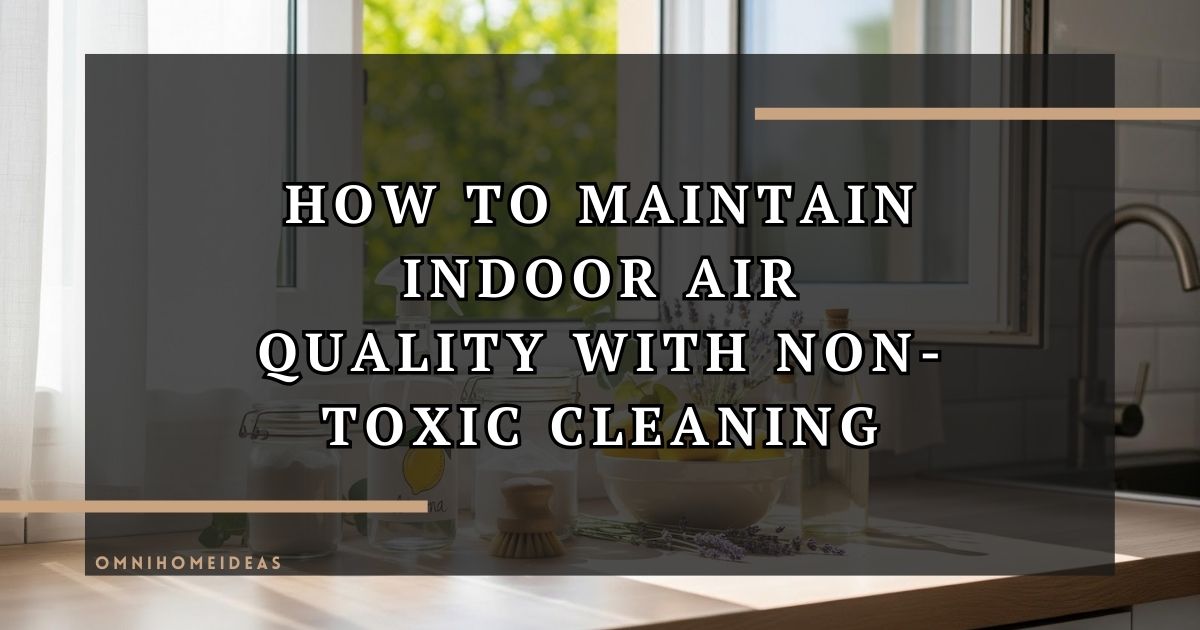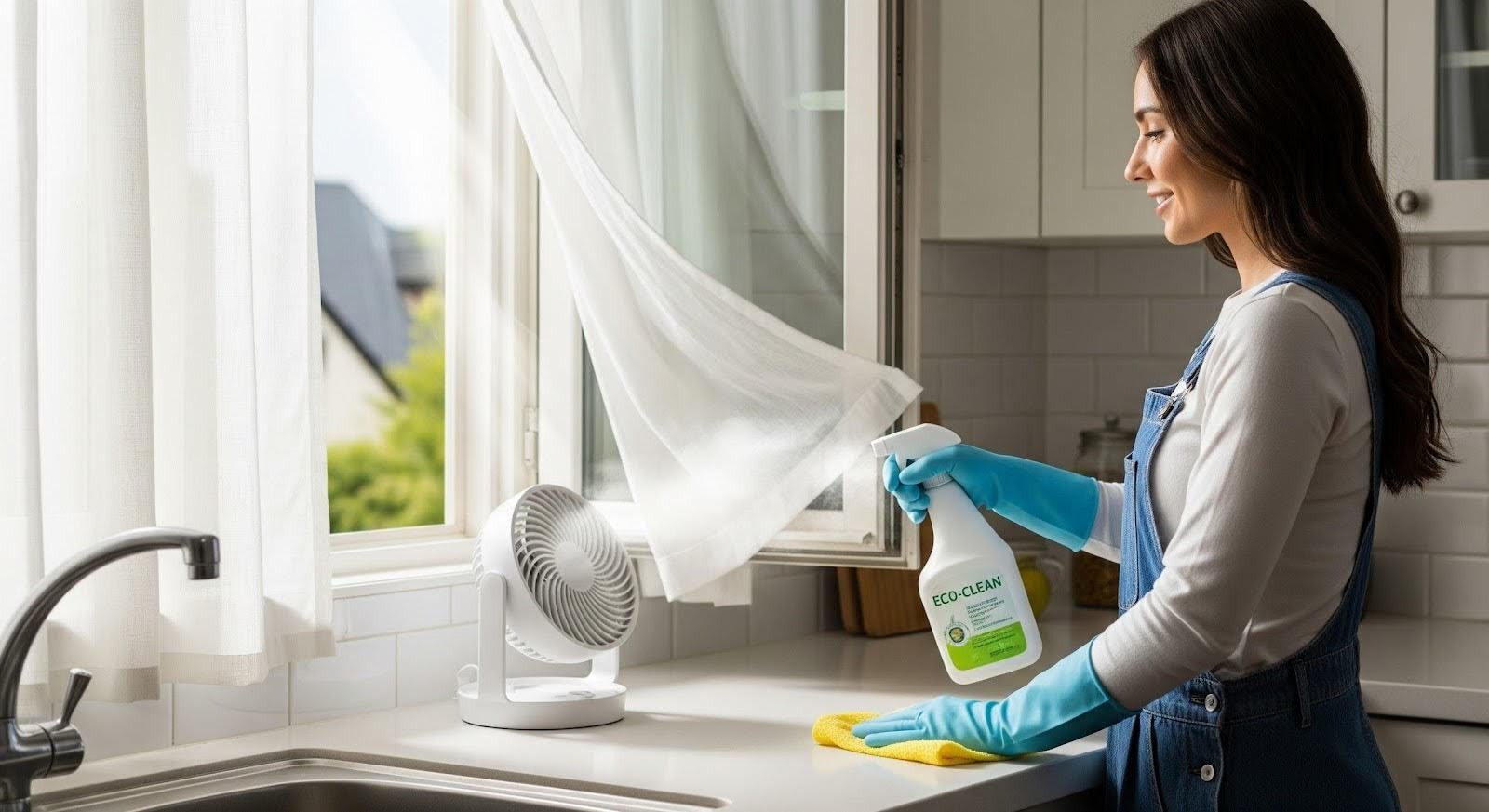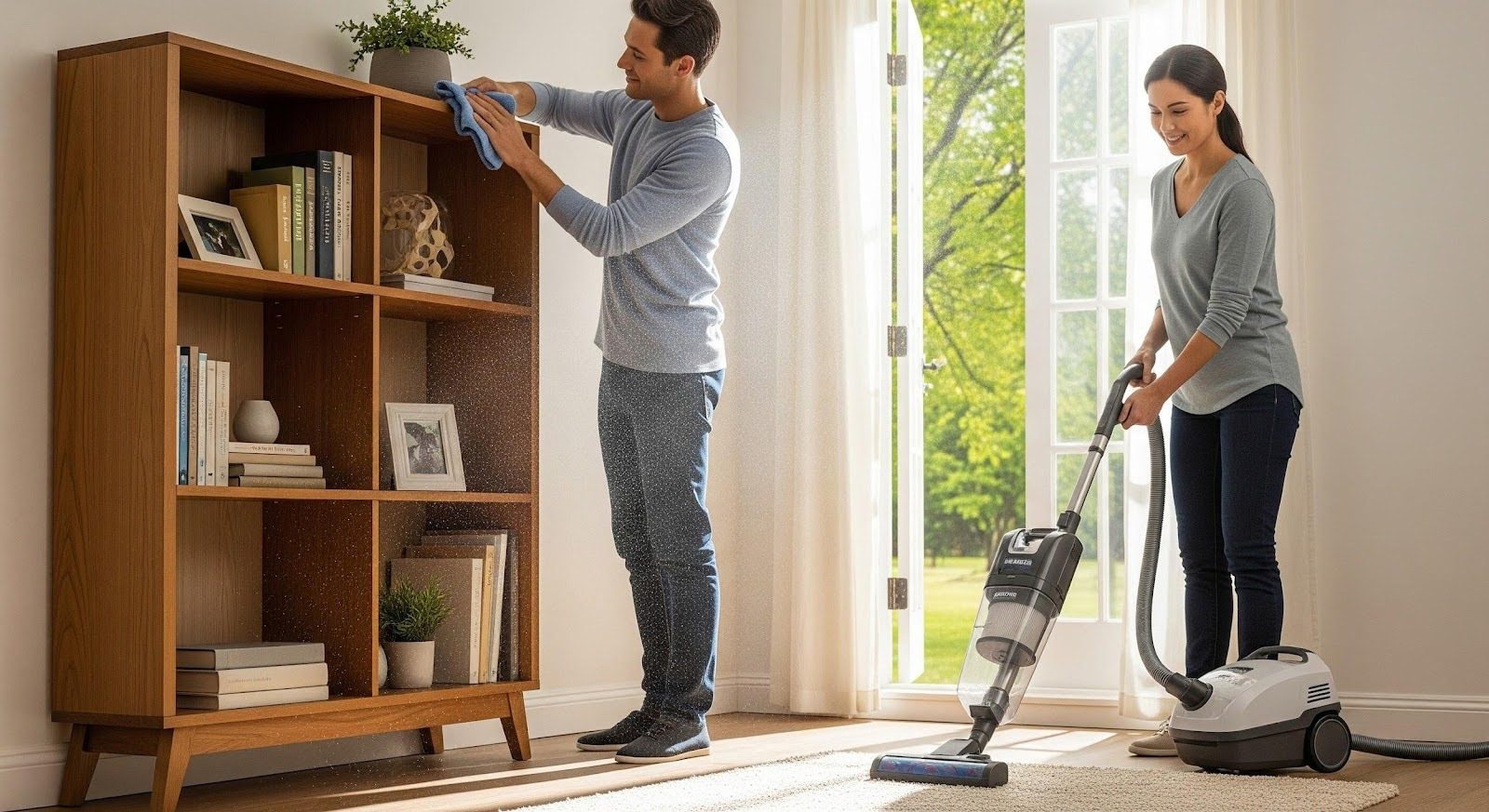You probably don’t think twice about the air swirling through your living room, but here’s the twist: Americans spend close to 90 percent of their lives indoors, and the air inside can actually be dirtier than what’s outside. In fact, pollution indoors often runs two to five times higher, sneaking into your lungs every time you binge-watch or cook dinner.
What makes it worse? That bottle of “fresh-scent” cleaner under your sink may be filling the air with chemicals long after the scrubbing ends.
Luckily, you don’t have to settle for invisible toxins. Non-toxic cleaning can clear the air while keeping every surface spotless.
So, how do you turn your home into a place where every breath feels lighter? Stick around, the answer is easier (and fresher) than you think.

6 Tips to Maintain Indoor Air Quality With Non-Toxic Cleaning
1. Ventilate While Cleaning to Circulate Fresh Air

Fresh air is one of the simplest ways to improve indoor air quality. Opening windows and doors while you clean allows dust, odors, and chemical traces to escape instead of settling back into the room. Even a short burst of airflow can make the space feel more comfortable and less stuffy.
Bathrooms and kitchens are common spots where steam and strong smells gather quickly. Turning on a fan or letting natural airflow pass through can help reduce the buildup of moisture and allergens in these areas. Regularly circulating air prevents pollutants from lingering and keeps every corner feeling fresh.
Choose products labeled as low VOC or non-toxic. Traditional cleaners and paints often release compounds that pollute indoor air long after you finish using them. Safer alternatives work just as effectively and, combined with good ventilation, they support a healthier home environment.
2. Replace Harsh Chemical Sprays With Natural Alternatives
Bleach and ammonia sprays clean fast, but they also leave strong fumes and residues that hang in the air. Natural substitutes are just as effective and help keep indoor air fresher.
One simple way to improve household air quality is to follow the approach recommended by Modern Maids, which is to keep everyday staples like vinegar, baking soda, and plant-based cleaners within reach since they clean thoroughly without filling the air with harsh chemical traces.
White vinegar is a dependable choice that works on glass, rust, and soap scum when mixed with warm water. Baking soda is another staple, absorbing odors and doubling as a scrub when paired with vinegar. Lemon juice can be added for extra cleaning strength and a light, natural scent.
3. Regularly Dust and Vacuum to Reduce Allergens

It is surprising how quickly dust builds up on shelves, blinds, and baseboards. Left alone, those tiny particles rise back into the air every time you walk by, lowering indoor air quality without you even noticing.
Microfiber cloths are an easy upgrade from traditional dusters. Instead of just moving particles around, they grab and hold onto dust so it does not resettle a few minutes later. When paired with consistent vacuuming, you create a strong defense against pollen, dander, and dust mites that otherwise linger in carpets and upholstery.
Families dealing with asthma or seasonal allergies benefit most from this routine, since fewer airborne irritants mean easier breathing and a healthier home environment. The key is consistency. A quick dusting session and regular vacuuming schedule can do more for allergen control than many people realize, making these simple habits a powerful part of maintaining indoor air quality.
4. Clean and Maintain Air Filters and Vents
Pull a dusty filter from an HVAC system and you instantly see what has been moving through your home’s air. Layers of pet hair, dander, and fine particles gather fast, and if the filter is neglected, the system ends up spreading those irritants from room to room.
Changing filters twice a year is a safe routine for most homes, while households with pets usually need to replace them more often. Upgrading to filters that trap smaller particles can also help ease allergy triggers and keep indoor air fresher.
Vents also deserve a quick check. Dust clings to the grates and edges, and wiping them down with a safe cleaner keeps it from blowing around again. Keeping filters and vents clear is a small habit that makes a big difference in how fresh and breathable your home feels.
5. Reduce Use of Synthetic Air Fresheners
That “clean” scent from sprays and plug-ins often comes at a cost. Many fresheners release volatile organic compounds that hang in the air long after the fragrance fades, leaving behind chemicals that can build up over time. Simple swaps make a big difference.
Simmering citrus peels on the stove brings a natural brightness to the room, while a few drops of essential oil in a diffuser can freshen the air without overpowering it. Even something as basic as opening a window on a mild day clears out lingering odors and makes the space feel lighter.
One change that instantly improves indoor air is removing smoke from the equation. Avoiding cigarettes indoors eliminates some of the most harmful pollutants and helps create a cleaner and healthier environment.
6. Incorporate Plants

A windowsill filled with greenery does more than brighten the view. Plants like peace lilies, spider plants, and snake plants quietly work in the background, pulling toxins from the air while releasing oxygen that makes the room feel fresher. Even Aloe Vera, usually kept for its soothing gel, plays a role in filtering indoor pollutants.
What makes plants so valuable is how naturally they blend into daily life. You water them, they thrive, and in return, they help reduce mold spores and improve the air you breathe. Pair them with non-toxic cleaning habits, and the effect is even stronger.
Instead of masking odors with sprays, you create a space that looks alive, smells clean, and supports a healthier atmosphere at home.
Conclusion
Cleaner air is often hiding in the small choices you make. Crack open a window while scrubbing, swap the harsh spray for vinegar or baking soda, and let a few plants earn their keep in the corner. These steps may feel simple, but together they transform the way your home feels.
Non-toxic cleaning is not just about keeping floors shiny. It is about creating a space where the air feels as fresh as the surfaces look. When every breath is clear, home becomes more than shelter. It becomes a place that genuinely restores energy.

